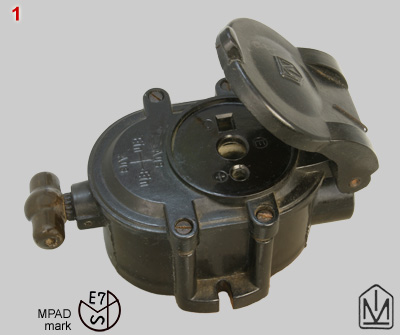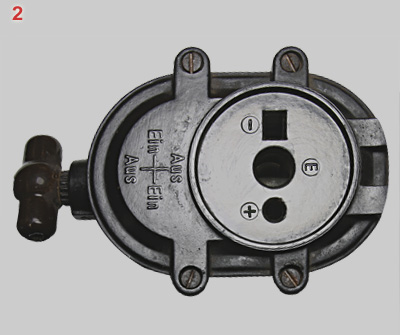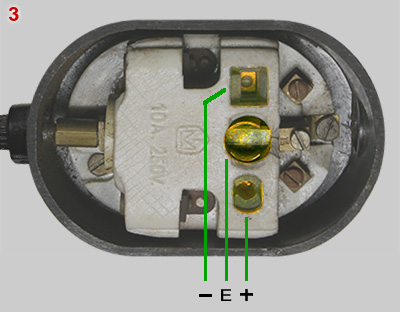 |
Direct Current Socket |
site map |
Standard |
locking plugs |
| Direct
current (DC) flows in a single, constant direction, meaning the current
does not reverse polarity like alternating current (AC). Most low-voltage electronic devices rely on DC power. For phones, tablets, shavers etc. conversion from AC to DC takes place in the appliance plug. Specification are given on the plug, see image right. DC sockets for domestic use are most uncommon. The example shown below was probably designed for workshops that used more demanding DC tools. |
 |
 |
 |
|
 |
| 1 | Socket
made by Maehler & Kaege in Ingelheim am Rhein, with rotating on/off
switch and protective cover. Rating: 10A - 250V. The Bakelite housing has MPAD molding mark E7 that refers to Gebrüder Spindler KG in Köppelsdorf, Stadt Sonneberg, Thüringen, Germany*. {MN} Given the unusual pin slots (see images 2 and 3) it must be a DC socket. Dating: 1930s. A Maehler & Kaege plug can be locked by turning the switch in on (Ein) position. See details on a separate page. * An identical socket and plug in the museum collection have a cast made by Wolff & Co. in Walsrode, Niedersachsen (MPAD mark 33-S). |
| 2,
3 |
Socket with folded
away cover (image no. 2) and inside view (no.3). Pin slots are
indicated as: positive (+), for a 5.0 mm diameter round pin; negative (-), for a 8.0 and 4.5 mm rectangular pin; earth (E)),for a 8.0 mm diameter round pin. |
| |
D i g i t a l M u s e u m o f | |
P l u g s a n d S o c k e t s | |